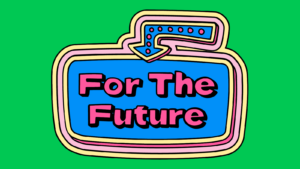Teaching Performing Arts
Teaching Performing Arts in schools has come a long way since both students and teachers have discovered that this versatile subject can do more for all involved than getting to grips with memorisation, pretending to be someone else, or working on poetry or play texts because the Language Department thought that would be the best way to utilise ‘drama’.
However, discoveries of learning through the arts have not made it any easier for teachers to provide students with well-guided lessons during which exploration can take place. After all, as teachers we’re all interested in outcomes, in results – but what’s the best way to achieve these?
Criteria are hard to set in creative subjects as it is debatable whether we as teachers are confident, or even willing, to appreciate whether someone is a good performer, a talented artist, or good at any particular technique. Outcomes of lessons in the arts can possibly show that students are learning on the spot, but this is not always the case: sometimes learning is more about harvesting skills that will pay off in some way at a later time.
Performing Arts are usually enjoyable for the more extrovert students but how can we involve the more introvert ones so they can also explore the skills on offer? Also, if students are strapped for time because of the exams that are set for the ‘core’ subjects, why spend time on a subject whereby the outcome is difficult to measure?
Let’s be honest, not all students attending Performing Arts benefit from this subject, just like some will not get everything out of ‘core’ subjects like Maths or Humanities. On top of that, our educational system has its requirements and it’s usually the top layer, the Universities and Colleges that set these as being the ‘core’ subjects. Very few Universities require you to have attended Performing Arts courses, not even the professional Performance Arts colleges. So schools need to have very solid reasons to teach something like ‘drama’, or ‘theatre studies’, or ‘performing arts’.
Here I come to what I really want to say about including Performing Arts in a student’s curriculum. This unique subject contributes greatly to learning about yourself, about others, about the world around you, while also enhancing collaboration, communication and creative skills. Add to this a good injection of focus, listening skills, problem solving, body awareness, and the ins-and-outs of what group work requires of you in different situations, and you have the perfect subject to enhance skills necessary in a continually changing professional world.
Oh, and let’s not forget to mention Fun. Learning anything, including a different language, is always easier when it is fun; please also read the columns of all other teachers on this website as we all agree!
Whether you set aside time especially aimed at Performing Arts, or block out a time in your other lessons to allow your students to explore performing, all the above mentioned skills can be addressed over a certain time. When acquiring language skills is one of the aims, you are presented with a wealth of possibilities when including (aspects of) Performing Arts, as this will provide for many different learning styles.
The worksheets show you how you can choose between ‘product’ and ‘process’, and how either, or both, can benefit different students. Some of the tasks are inquiry-based, while other exercises include group games. The tasks show you, the teacher, how to become a facilitator rather than an instructor, and how simple beginnings can lead to impressive results. Speaking, of course, is included, but also written reflections and understanding through reading, while discovering that tasks focusing on physical performance can also enhance learning language.
But let’s start at the beginning. The activities in this first downloadable worksheet focus on focus, and that’s where it all begins, so take a deep breath, get focused, and begin.




